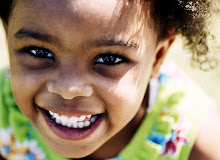Wednesday, November 28, 2007
Exciting innovation in the Northland!
To me, one of the best things about Invest Early (aside from providing quality early learning for the community's youngest citizens) is the simple, stream-lined application form. This application is great because it makes things so easy for the families. They don't have to worry about filling out multiple, long, complicated forms. Then, the staff from Invest Early assess the applications and decide if the child will be designated as Head Start or School Readiness. Sometimes, families don't even know how their child is designated.
Invest Early is a great example of what Ready 4 K proposed in the 2007 legislative session as Early Childhood Community Hubs, part of our E-12 Linkages Bill. The goal is to have a simple, coordinated systems for families. Invest Early would not be possible without the support of the Blandin Foundation. The investment per child is significant, but Blandin is hoping to show that this early investment will make a difference in the Itasca area over the long-term. Blandin is working with Wilder Research on a longitudinal study of the program.
It was very exciting to talk with the leaders of the Invest Early program. One thing they stressed, though, is that this kind of collaboration does take a lot of time and a lot of trust among all the players. The good news is that it works!
To finish off the trip, we attended the Grand Rapids Thunderhawks versus the Cloquet-Esko-Carlton Lumberjacks boys high school hockey game. The teams tied 2-2 after a very exciting match-up (my first live hockey experience in Minnesota).
Tuesday, November 20, 2007
Happy Thanksgiving!
Crafts and projects are always a staple of the holiday season. Click here for a cute Thanksgiving turkey craft.
Have a wonderful holiday!
Monday, November 19, 2007
Pre-K programs... not just in schools
Parents of preschoolers might have been surprised by recent articles indicating that fewer than 2 percent of 4-year-olds in Minnesota access pre-kindergarten programs. This statistic is confusing in that it refers specifically to publicly sponsored school-based pre-kindergarten programs.
In fact, according to Wilder Research, 69 percent of preschool-age children in Minnesota are enrolled in licensed early care and education settings, although a tiny portion of those are publicly sponsored school-based programs. Read more...
It is true that Minnesota needs to do more to invest in early education. Ready 4 K believes the investment needs to be done in a way where parents can choose the right setting for their child, including community-based settings and family home care. To say that access Pre-K only happens in publicly funded school settings is limiting.
Friday, November 16, 2007
Growth & Justice Education Summit: getting more bang for the buck
One of the main themes of the summit was the need to invest in early childhood education. Of course, the role investment in early education has in economic development is a major theme of Ready 4 K's work. It is amazing to think how far early childhood has come as an issue. Five years ago, when Ready 4 K was just getting started, a summit on education would have likely been focused primarily on k-12 and higher education. Now, people are beginning to talk more in terms of E-16 or P-16 to show how education needs to be a continuous stream from early childhood or preschool through college or university. It's a refreshing change to see. It reminds me that we are making progress in moving the issue forward and promoting the benefits of investing in the first five years, even though we have so far to go.
One of the startling things that was reported from the summit is that, according to research done by Dr. Arthur Reynods at the U of M, Minnesota is ranked 36th in the nation when it comes to children attending state pre-k programs.
A key priority is improving support for kids from birth to age 5. Only 1.9 percent of Minnesota 4-year-olds had access to prekindergarten classes in 2005, placing the state 36th in the nation on that measure. During the same year, Minnesota spent an average of slightly more than $283 per child for school readiness and $270 per child for Early Childhood and Family Education (ECFE) programs. Those expenditures don't measure up to Wisconsin, Michigan and Illinois -- all states that spend an average of $2,980 or more per child for prekindergarten programs.
These statistics are certainly startling. However, they only include children in state funding programs, which in Minnesota are School Readiness and ECFE programs in the public schools. While it is true that Minnesota has dramatically underfunded preschool education and we need to do much more in this area, more than 1.9% of Minnesota 4-year-olds attend pre-kindergarten classes. These pre-k classes take place in community-based settings where children are while their parents are working. Most child care centers have age-appropriate curriculum for 3 and 4 year olds where they are learning the skills needed for school success. To say that less than 2% of Minnesota 4-year-olds are in pre-k is misleading, it is just that they are not in settings directly funded by the state for pre-k.
That being said, we still need to do more. Minnesota needs to expand investments in early childhood education, wherever the children are. That is what Ready 4 K will continue to advocate for. I hope you'll join us.
Monday, November 12, 2007
Who Goes to Preschool and Why Does it Matter?
Summary:View the full policy brief
Preschool participation in the U.S. has been increasing steadily over the last four decades. By 2005, more than two-thirds of the nation's 4-year-olds were enrolled in a preschool program -- but who are these children? Where are they? This policy brief identifies factors that influence preschool enrollment, such as income, geography and ethnicity, and offers policy recommendations to address inequities in access.
At Ready 4 K, we believe that every child in Minnesota deserves access to a high quality early learning experience before kindergarten. Studies like this report from NIEER show that children who could benefit most from participating in a pre-kindergarten program are often the least able to access a quality program. As Ready 4 K prepares for the 2008 legislative session and looks to build for the 2009 session and the future, we will continue to advocate for more children to have access to pre-k programs and for parents to be supported in getting their kids ready for school.
Tuesday, November 6, 2007
Election day!
If you're not registered yet, don't let that deter you. As long as you are over 18 and have been a resident of Minnesota for more than 20 days you can register to vote at the polls. Just bring a utility bill to confirm your address.
If you don't know what you'll be voting on, the StarTribune website has a handy MyVote site where you can find out who and what will be on your ballot before you head to the polls.
So, get out there and vote! Your voice matters!
The best time to talk to legislators
You also can be meeting with your legislators right now and tell them you expect them be a champion for our youngest Minnesotans. In fact, this is the best time to talk to legislators. When they are not in session legislators are less rushed and have more time to listen. So, find out who represents you and sit down and hand-write a letter to your elected officials. Introduce yourself and let them know you're a constituent who cares about early childhood. Or, better yet, invite them out for coffee to talk about the importance of quality early learning for all. You don't have to be an expert, just speak from the heart. Ready 4 K has developed an advocacy toolkit to get you started, including a few talking points in case you need a reminder.
I'd love to hear how your conversations with legislators goes. Leave a comment or email and let me know.
And thanks for being a voice for our children!
Friday, November 2, 2007
10 Things to ask when choosing Pre-K
For example:
1. Can I make an appointment to visit your program and spend time in a classroom?Click here to see the entire list. Is there anything else that you look for when choosing an early learning setting? Leave your comments below.
What to look for: safe spaces with children comfortable and engaged in what they are doing, not easily distracted or wandering aimlessly; children seem happy, not distressed, bored or crying; adults are caring, sensitive (not harsh), responsive to children's needs and requests, and involved in what the children are doing by helping children solve problems, accomplish projects and learn; time and space for active outdoor and indoor play as well as quiet time. Children's voices dominate.





